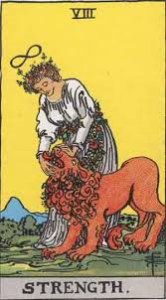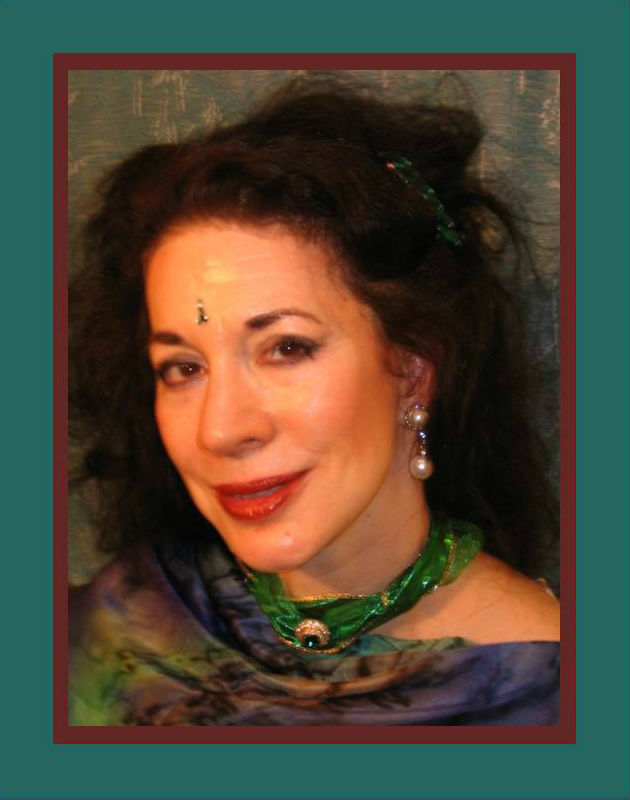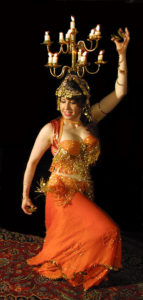The Next Stage in Personal Evolution
Maybe We’re ALL Autistic – to Some Extent

In last week’s post, I asked you (my readers) the question: Are you autistic?
I’d assumed (erroneously) that most of you would say something like: Me? Of course not!
I was wrong.
I got an email back from one of my readers, Yes, I am autistic, and dance helps my symptoms.
What Is It Like to Use Belly Dance for Personal Healing?
I know the woman who wrote back to me; she’s actually very well integrated – she has a strong role in society, is a valuable member of several groups, and is overall an absolute dear and delight.
I was surprised that she labeled herself autistic, although that I knew she used belly dance strongly as a healing modality.
I also knew, though, that she attended strongly to the beat of a “different drum” – she listened more to her inner self than to the external world.
Belly dance has been important for her as a means of tapping into her body’s secret storehouse of knowledge. For her, as for many of us, belly dance (Oriental dance), truly is an integration pathway.
As I reflected on what she wrote, I thought: I’ve used belly dance for healing myself, just as she has. And many, many of my students have said the same.
In fact, probably most of the women who come to me (and yes, like attracts like), have come less because they want to put on the glitzy costume and perform on stage. They come because they want to tap into who they are in a deeper way.
That, and do some serious healing and integration.
And for some of us, of course, performances and other stage opportunities do ensue. (This in fact may be part of the healing process.)
We Heal Ourselves from Being Emotionally and Energetically Fractured
In that sense, maybe we’re all dealing – to at least some extent – with the challenge of having various aspects of who-we-are fractured, and our conscious awareness sometimes not fully tied into either our surroundings or our bodies.
A couple of months ago, I wrote about How Belly Dance Healed My Life.
From the stories that I hear; I suspect that I’m just one among many.
We may not all use the term autistic to describe ourselves, but many of us – due to a range of factors – may feel that it is difficult to be present in this world. Co-opting the title of one of Robert Heinlein’s most famous science fiction novels, many of us feel that we are a Stranger in a Strange Land.
|
Robert Heinlein’s “Stranger in a Strange Land” |
||||
|
Paper
|
Kindle
|
|||
Meaning from Movement Applies to Our Dance
One of the things that I love most about Oriental dance is that it allows us to both access and express the full range of who we are.
This is important, because most of us – in our day-to-day lives – find that we access only a limited part of our emotional range.
Through movement, we express ourselves through a much more complex emotional vocabulary.
In that sense, the phrase coined by autism researcher Dr. Geoffrey Waldon, Meaning [comes] from movement, is useful for all of us.
What’s the Next Step after Basic Emotional Healing?
Our emotional healing progresses throughout our entire lives. Most of us – unless we are a very advanced soul – will not finish in this lifetime.
However, we do move on to progressively deeper – and more refined – aspects of inner healing.
Specifically, we start to work more with our full energetic being.
Carolyn Myss, in her book Why People Don’t Heal and How They Can, writes (in Section One on “Your ‘Cellular Bank Account'”):
Each of us has hundreds of circuits of energy connecting to us, energy that different cultures have named in different ways as the Divine breath of life that animates each of us. What the Indians call prana and the Chinese call ch’i, Christians refer to as grace or the Holy Spirit, and secularists might call vitality or simply life-force. [p. 16]
Although the life-force is equally available to all of us and flows into us whether or not we are aware of it … it’s possible to maximize our intake and use of it. In fact, consciousness means awareness of the flow of life-force into us and the ability to direct it into certain areas of the body, without unknowingly releasing it from other areas of the body.
Imagine this flow of energy as a financial allowance … positive investments will earn you positive returns… Negative investments, on the other hand, will create debt. [p. 16]
The only way to release the pattern into which we have locked ourselves is to release the weight of the past – to get out of the energy debt we can no longer afford to carry. Forgiveness is one sure way out of debt. Forgiving does not mean saying that what happened to you doesn’t matter, or that it is all right for someone to have violated you. It simply means releasing the negative feelings you have about that event and the person or persons involved.[p. 18]
|
Dr. Carolyn Myss, “Why People Don’t Heal and How They Can” |
||||
|
Paper
|
Kindle
|
|||
What Caroline Myss teaches gives us an important and valuable connection:
To use belly dance as a sacred pathway for body/mind/psyche/energy healing and integration, we also have to do some spiritual work. Most especially, we have to learn forgiveness.
First, we start forgiving ourselves. Then, we also forgive others.
The Course in Miracles also teaches forgiveness as a basic principle.
We’re going to be working with this – and with other spiritual principles (gratitude, giving love, and taking responsibility for our thoughts) over the next months.
For today, it may be sufficient to simply start being gentle with yourself.
First step: Ease up on the judging.
We are much harsher with ourselves than we are with anyone else.
Cultivate – to the best extent that you can, just for today – the art of gentleness. (You do this, and I’ll try to do this also.)
How Being Gentle with Ourselves Is the Key to Our Next Stage of Personal Growth
Belly dance gives us the means to be with our bodies, and our feelings. It helps us access our inner feminine core, and express the feminine aspects of ourselves.
There is one more step that we can take, though.
If you’ve been following me on the Unveiling blog, you’ll know that we’ve been working towards the goal of core archetype integration. This is often typified by the seventh card in the Tarot’s Major Arcana; the Chariot. (For those of you familiar with the Tarot, this sounds like a masculine archetype, right? Read Unveiling’s Chapter 7: “A Real Woman’s Path (Really Does Exist!),” to learn the original meaning for this card. It started off as a feminine archetype: the Winged Goddess.)
Beyond the Chariot or Winged Goddess stage, where we literally force our archetypal polar opposites to work together, we open up a brand new stage of learning.
We introduce this with the notion of Strength, Major Arcana Card VIII.

Have a look at the figure to the left.
It shows us the Tarot card Strength (Major Arcana Card VIII). This is the first card in the second series of major life journeys.
Notice how the woman is easing her “inner beast” to the ground; she’s subduing it not with force, but with gentleness.
In most of my Unveiling blog, and in my book, Unveiling: The Inner Journey, I focus on the first major life journey: getting to access, understand, and integrate our eight core power archetypes.
I briefly mention the second and third journeys adult life journeys. The second journey deals with accessing our inner Fountain of Youth – our intrinsic personal energy.
Martial arts masters – especially of the internal martial arts (T’ai Ch’i Chuan being a premier example) use their internal energy, or ch’i, as part of their practice.
In our second adult life journey, we learn to do the same. (Read Unveiling’s Chapter 29, Pragmatic Esoterics, for a start on this.)
Forgiveness Leads to Gentleness; Gentleness Leads to Tension Release, Tension Release Leads to Better Dance
For a practical start, as you do your belly dance exercises this week, focus on softening your body. Use the force of gravity to help you align, not muscular tension. See how much you can release tension throughout your body.

We’re beginning to learn effectiveness while staying soft, relaxed, and gentle.
As Saint Frances de Sales is credited with saying:
Nothing is so strong as gentleness, nothing so gentle as real strength.
Let’s try putting this into action together, shall we?
And we’ll check in with each other next week.
Very best wishes as you use Oriental dance (belly dance) for personal growth and healing!
Yours in dance –

Alay’nya
Author of Unveiling: The Inner Journey
You are the Jewel in the Heart of the Lotus. Become the Jewel!
Founder and Artistic Director, The Alay’nya Studio
Bellydance a courtesan would envy!
Check out Alay’nya’s YouTube Channel
Connect with Alay’nya on Facebook
Follow Unveiling: The Inner Journey on Facebook
Oriental Dancer Nimeera on Unveiling: The Inner Journey
What does Oriental dancer Nimeera have to say about Unveiling: The Inner Journey?

This is a wonderful book! Unlike so much of the fluff out there, this one is by no means an “casual read” to read in the little stolen moments of the day. Rather, it is something with many layers of depth to be explored in meditation and contemplation, with a cup of tea, away from the demands of children and husbands. And then not to read all at once, but section by section with time for reflection between readings… It has resonated with me and given me validation for the things I feel and do that don’t always fit with society’s expectations for me, and given me ideas for how to further mold my life path to my greatest satisfaction.
Nimeera Nazmine performs in North Virginia (Fairfax and Woodbridge), as well as in Washington D.C. She also teaches classes in both belly dance and Bollywood-style Indian dance.
|
Alay’nya, Unveiling: The Inner Journey |
||||
|
Paper
|
Kindle
|
|||
Copyright (c) 2013, Alay’nya. All rights reserved.


